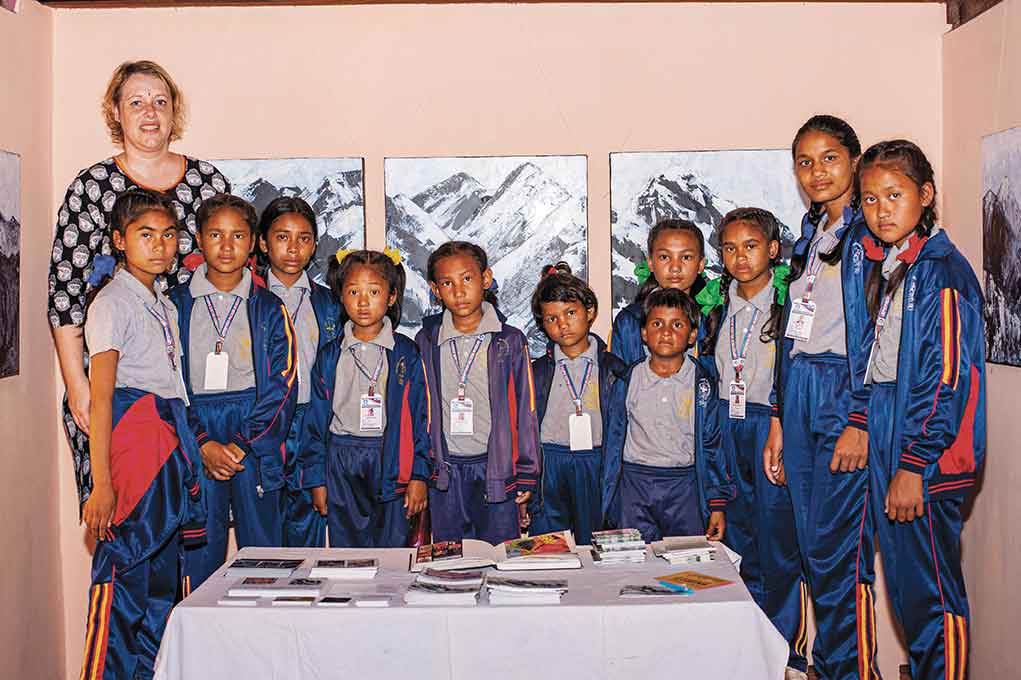Cultural Anthropology : A Contemporary Perspective (by Roger M. Keesing and Andrew J. Strathern) defines myths as “accounts about how the world came to be the way it is, about a super-ordinary realm of events before (or behind) the natural world”. Creation myths of different cultures from different parts of the world are specifically concerned with how the universe was formed and how gods and men came into being. These myths describe something that man cannot see or comprehend, that is beyond his realm of knowledge or experience. The important function of creation myths is to bind the community together.
In Riddum, the aged shaman, Sancha Prasad Rai, of the Kulunge Rai community, tells the story of his people. The Kulunge Rai are an ethnic minority speaking a Tibeto-Burmese language that settled in the valley of the Hongu River in eastern Nepal. The riddum is the sacred tale “describing the origin of the cosmos, of nature and the living beings that populate it”, and is even today handed down orally from generation to generation. As a creation myth, it gives us an insight into the culture and traditions of its people. There is a great emphasis on the elements and forces of nature such as water, sky, and wind, and even particular animals such as the snake, or humbler creatures such as the lizard or thrush. The ancestors of the Kulunge Rai were nomadic hunters, and although today most are sedentary farmers, the deep cultural and spiritual relationship with land and nature that goes back many hundreds of years continues to be celebrated and kept alive in their myth.
In his beautifully written Foreword, Martino Nicoletti, ethnographer and anthropologist, gives us some fascinating background information regarding the riddum. We learn, for instance, that the language of the riddum is related to ritual and is believed to be “the primordial language”, which only a few continue to use in order to keep alive “a dialogue with the ancestors who lived in mythical times and with gods of their own religious tradition”. Within the borders of ritual to which it is largely confined, the language continues to wield its ancient power; it is believed to be a magical agent, ensuring that religious rituals are efficacious. Nicoletti also makes the important point that “for the Kulunge Rai, no recitation of the riddum would have any meaning if it were proclaimed in a language that attempted to translate the original idiom. The riddum would then lose its value. Suddenly, its magic power would vanish. In other words, for the Kulunge Rai, the riddum, in its purest form, is ultimately untranslatable.
The riddum not only narrativizes the past as all myths do, but also transforms present-day flesh and blood people into characters of myth. Every person, on dying, becomes part of the great throng of ancestors who go back to the earliest forefathers. The myth serves to remind every member of the Kulunge Rai community that they are but the last link in a very long genealogical chain, which connects “the historical present to the mythical past”. Neither does the myth end with them. As Nicoletti says, ‘even our narrator (Sancha Prasad Rai) is “inside” the riddum. He is a fragment of it. But the riddum does not stop with him. Having devoured him, it goes on at once: it mentions Sancha Prasad Rai’s eldest son and his youngest grandson. The myth, springing directly from the origins of the cosmos, now flows up to this very moment in time’. For the Kulunge Rai, the myth simultaneously grants epic status, and thus, immortality, while, at the same time, reminding man that he is mortal and that life is short.
Book Courtesy: Mandala Book Point; Publisher: Vajra Publications; 62 pages.

Preserving food heritage and celebrating underrepresented ingredients: the gem that is Raithaane
Raithaane was not what...










